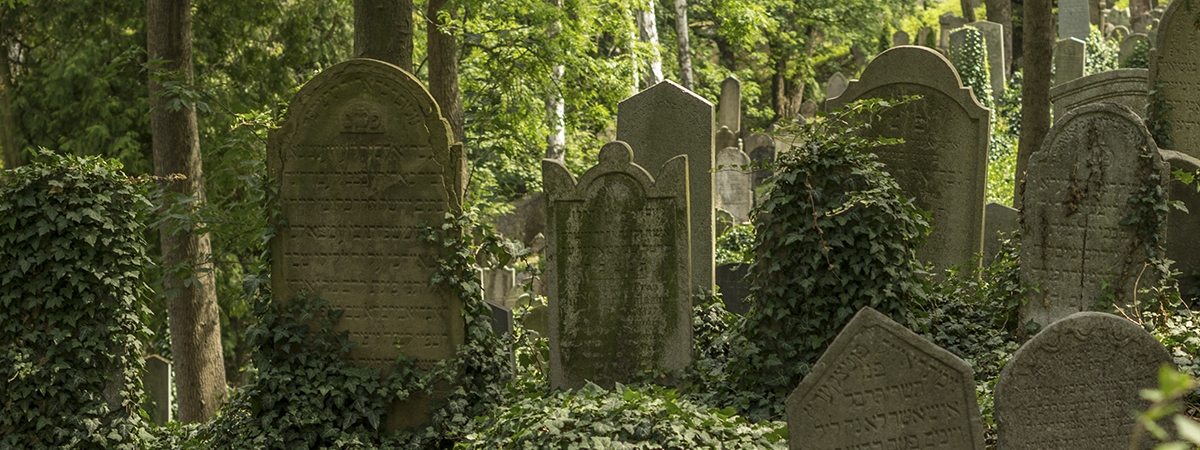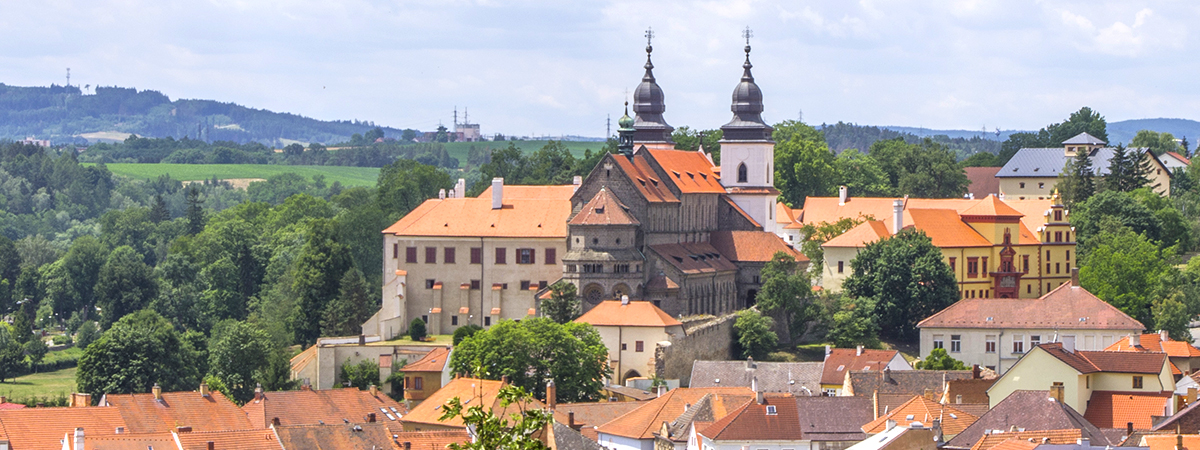UNESCO Sites In Třebíč
UNESCO heritage sites are main attractions in Třebíč for history savvy travellers. On the left side bank of Jihlava River, lies historical Jewish Quarter. After a few minute walk uphill you will find 14th century Jewish Cemetery and you can conclude your tour in St. Procopius’ Basilica. So let’s explore closer Třebíč’s historical sights!
1. The Jewish Quarter
Historians assume that first Jews came to Třebíč around 13th century. Jewish quarter grew until 17th century. Landowner Jan Josef of Wallenstein halted the expansion and issued an order to exchange houses between townspeople and Jews, eventually turning Jewish Quarter into ghetto.
Nowadays UNESCO recognized Jewish Town is a complex of 123 historical buildings. Medieval brick roads and narrow alley ways are great for afternoon walks.
The buildings are now privately owned therefore they are not accessible for public. Fortunately guided tours are exceptionally informative and will help you to learn about history of Jewish Quarter and Jewish traditions.
2. The Jewish Cemetery
Behind iron-cast gates on the steep side of Hrádek hill, lays another UNESCO landmark, the Jewish cemetery. First records of the cemetery dates back to 1636. It might have been founded as early as 1920s and suppose to be connected with Jewish Quarter via wagon rails. In cemetery are approximately 11 000 graves with 3000 headstones. The oldest headstone found in the cemetery dates back to 1631. Two memorials have been built to commemorate World War I Jewish soldiers and the victims of World War II ethnic genocide. By the entrance stands a Ceremonial hall, built in 1903. Cemetery has unique layout since it lays on a steep slope. Most graves are covered with ivy and it is especially green during summer time.
3. St. Procopius’ Basilica
St. Procopius’ Basilica was built in early 13th century and dedicated to the Assumption of the Virgin Mary. The basilica and monastery fully endured two attacks. First one in 15th century when Hussites attacked monastery and decades later it was finally besieged by Hungarians. Due these violent events monastery declined and last monks left in 16th century.
The Osovský family of Doubravice renovated monastery into comfortable Renaissance residence. The basilica was used as stables, and crypt turned into storage for beer and other goods. Later count John Joseph Waldstein returned the basilica to it’s purpose and named it St. Procopius’ Basilica. Romanesque and Gothic style basilica was rebuilt in Baroque-Gothic style. Basilica’s renovations only finished in early 20th century.
Basilica is open for visitors through the year with limited hours during winter season. Outside the basilica is front yard with a view of Třebíč. Inside you can see Abbot’s Chapel covered with second oldest frescoes in Moravia region and well preserved crypt.
St. Procopius’ Basilica received UNESCO heritage status in 2003.




